Producing Quality Charolais Cattle since 1957
Rawe Ranch cattle are produced and sold under a long-standing program based on honesty, integrity, and profitability.
For 67 years our focus has been on total performance; growth, calving ease, fertility, longevity, and carcass quality. Since the early 1990’s, Rawes Ranches has annually offered the largest volume of one iron Charolais bulls in Canada.
Today, the operation is comprised of both a purebred herd, a commercial herd, and the land base to support the pasture and feeding requirements. Four generations of family have been involved and dedicated to the ranch, with Philip now managing the day-to-day activities.
Each new year begins with excitement. Preparations for the bull sale held annually on the third Tuesday of February are the focus. March is bull delivery season, something Philip eagerly looks forward to. Each trip is a new experience and a chance to connect with customers and friends and learn more about other operations and areas. We are fortunate to have good help that can keep things upright while he is away.
RAWE RANCH BULL SALES
Once bull delivery is done, the preparations for calving are soon underway. Cows are moved from winter pastures to calving pastures where they have plentiful grass and shelter. Currently, our breeding program is a combination of AI and natural. We feel this diversity has allowed us to manage pastures better, while not sacrificing the advancement of our genetics. Our AI program is still done the old-fashioned way with visual heat detection of natural cycles. Sometimes this can seem like a chore, especially during July when we are gathering AI cows and watching the campers and boats heading out for a weekend of fun.
Our harvesting begins in August with a little bit of hay and a whole lot of silage. And as we all know, harvest can last as little or as long as mother nature decides. We like to be wrapped up by mid-September so we can put together our annual old-fashioned threshing bee.
Soon after the equipment is put away, plans for weaning and wintering begin. During the first week of November, calves are brought home to the feedlot where they get their first taste of silage and grain. At the same time, cows are gathered in large groups for winter management.
Over the years we have realized the benefit of a hands-on management approach rather than hiring out certain aspects of the operation. Our cow herd is bred and raised at the ranch. We know every cow, who she is, where she came from, her strengths and her weaknesses. Similarly, every bull we offer for sale has been bred and raised under the same management.
Many things have changed for us and our industry over the years, but one thing remains a constant here at the ranch; we are always working toward progression and advancement.
Our philosophies in agriculture production are focused on a “No Nonsense” approach. Simply put, the cattle must be practical, efficient, economical, and, above all else, meet the needs of the marketplace they were produced for.
A rigid culling program ensures that the herd is continually achieving higher excellence. The cow herd calves unassisted on pasture in May and June. There is no distinction in management practices between purebred and commercial cow herds. “They either work…or they don’t…they’re functional…or they go!”
In a similar way, the bulls aren’t pushed as yearlings. After weaning in November, they undergo a full 15 months of evaluation and are sold between 18 – 20 months of age after they have matured and are ready to go to work. In order to continue progression and advancement, only the superior bulls are offered for sale. Any bulls that don’t measure up to this standard, end up on the meat counter.
Each year performance and grading information is collected on both herds of cattle to evaluate and improve the genetics of the herd. Rawes Ranches was the first Charolais sale in Canada to print EPDs (Expected Progeny Differences) in the sale catalogue. We have been collecting carcass data on the yearling bulls since 1999, long before there was an industry incentive or economic gain.
We don’t sell bulls privately, nor do we consign to other sales. We want our customers to have equal opportunity to every bull that is offered. We believe in the auction system and are confident in allowing our product to sell in the open market.


